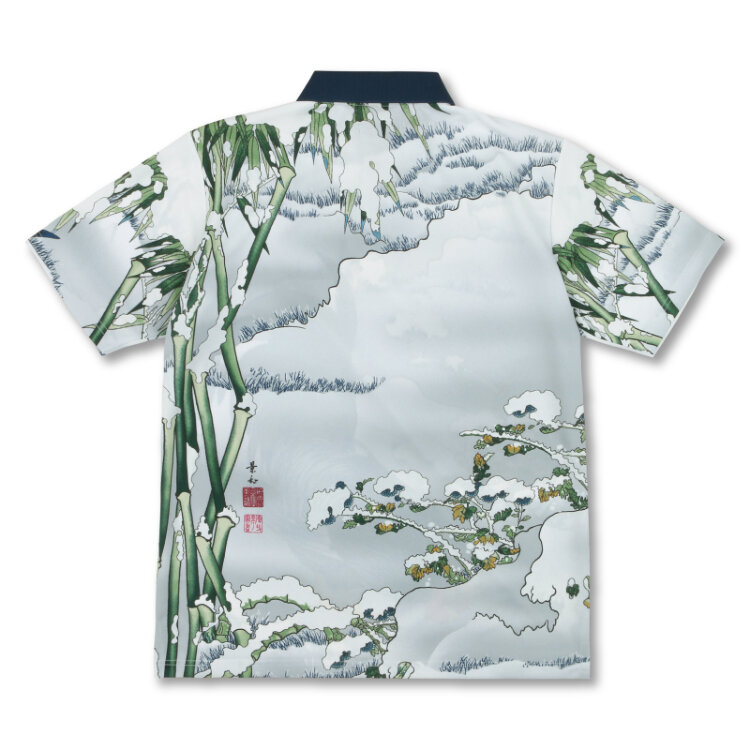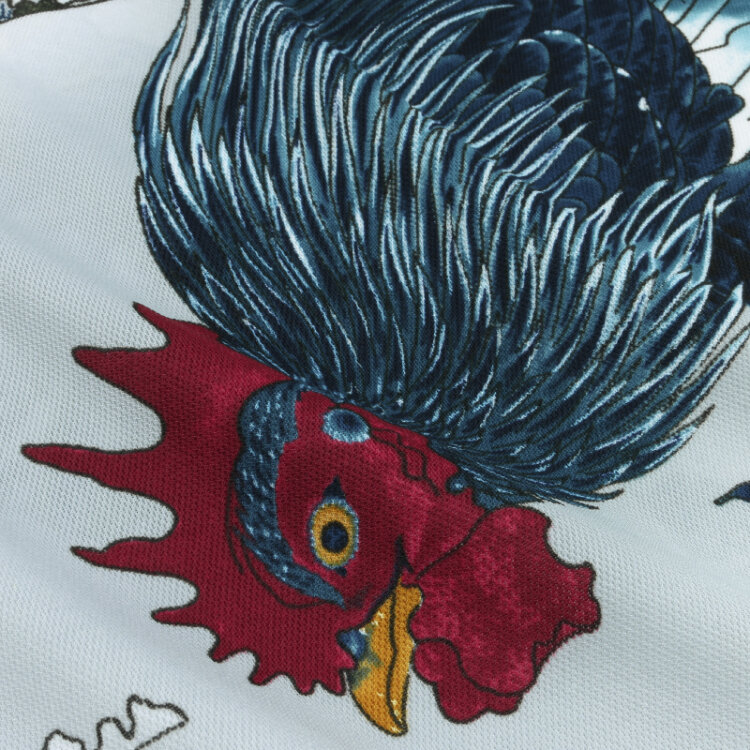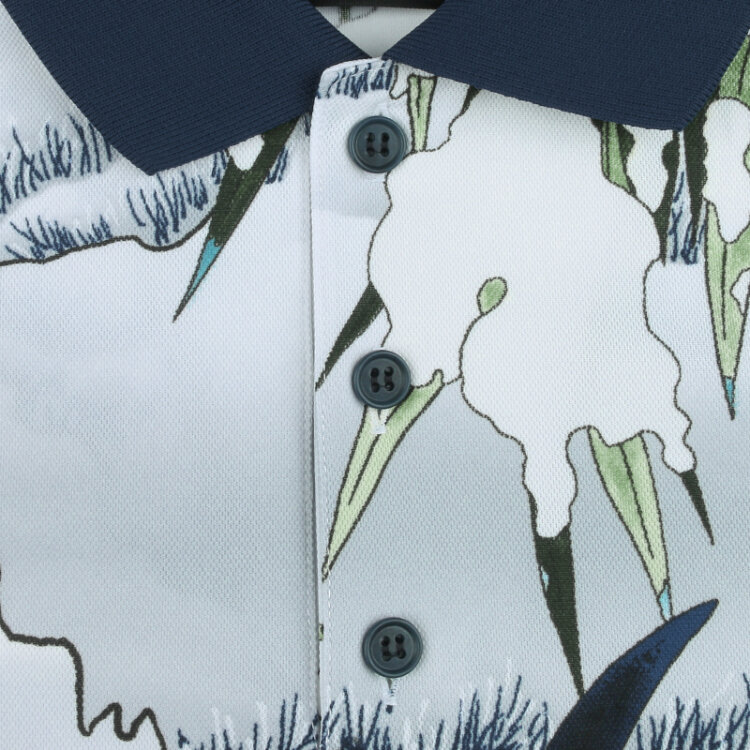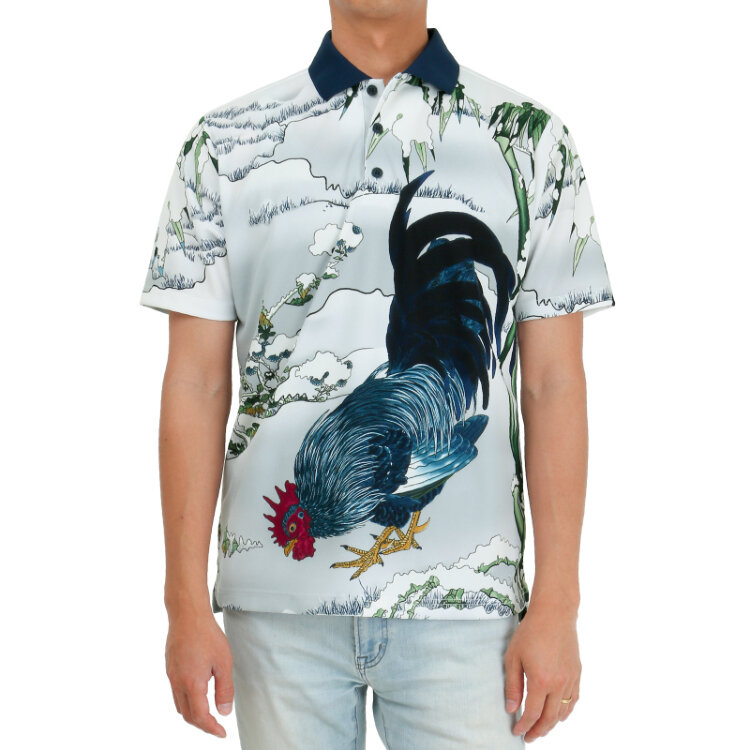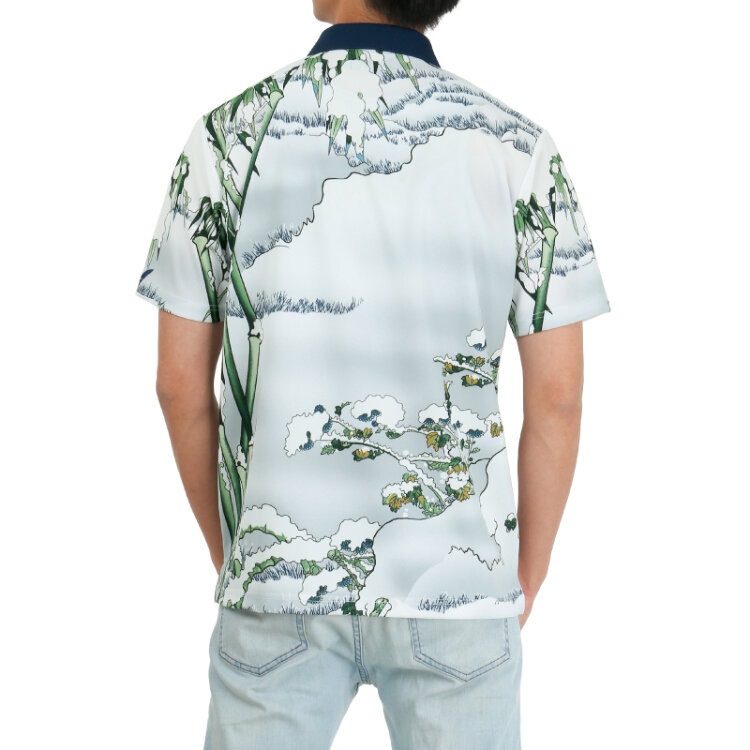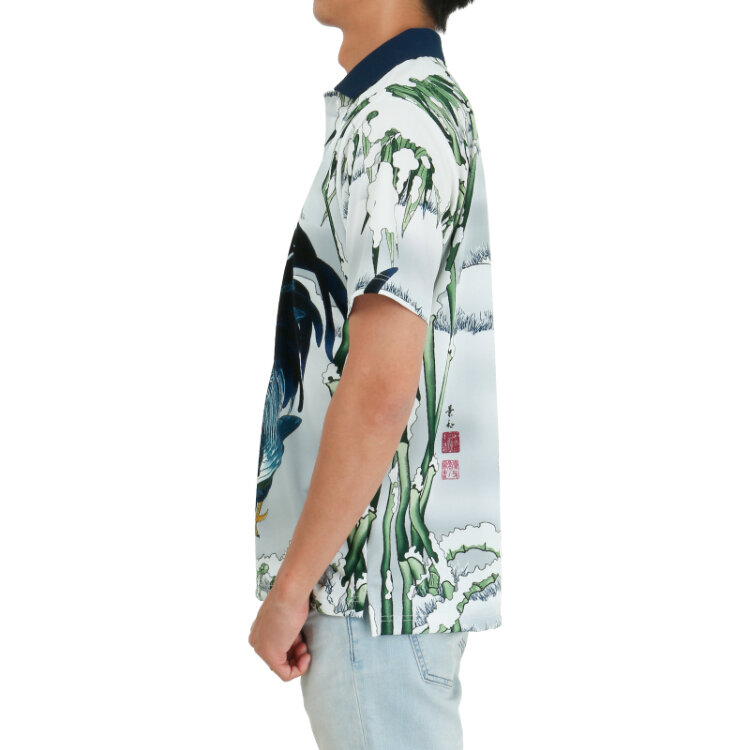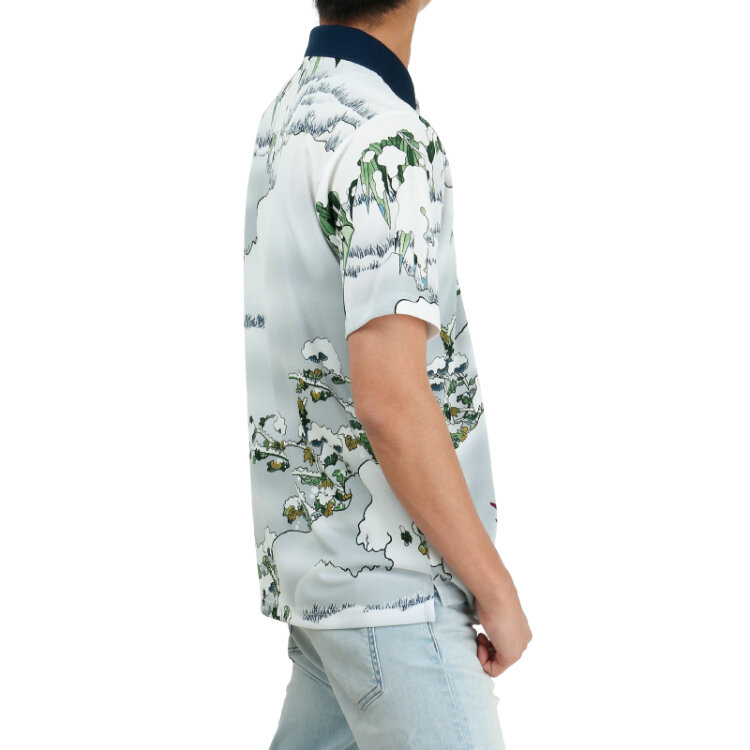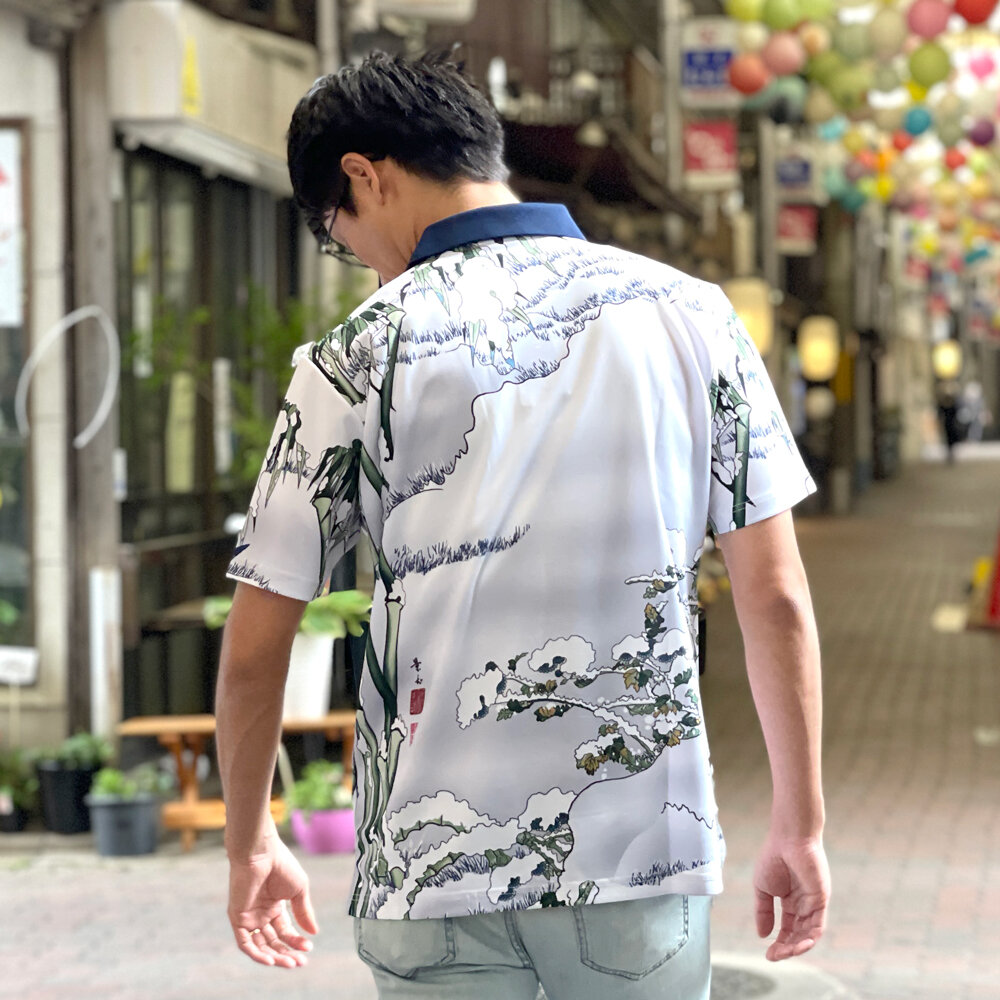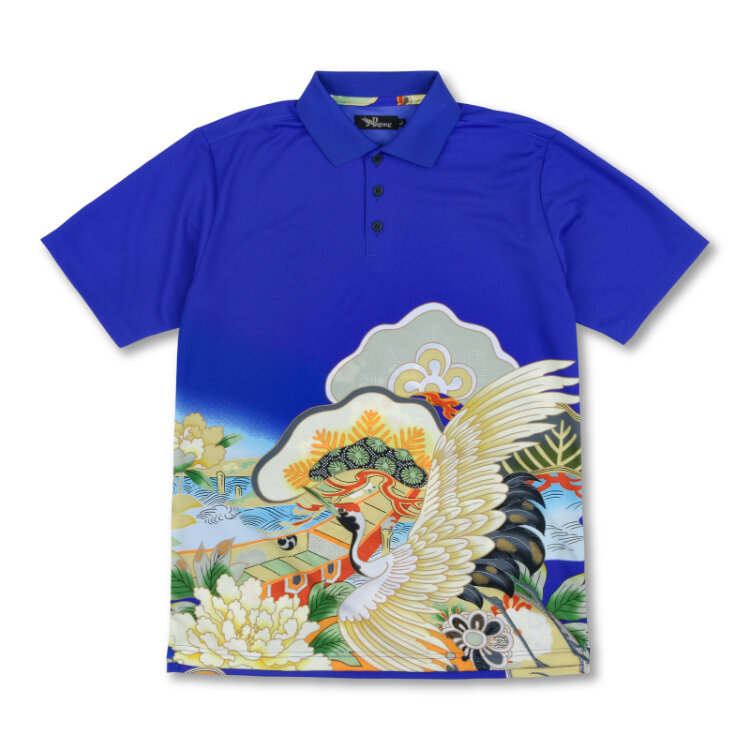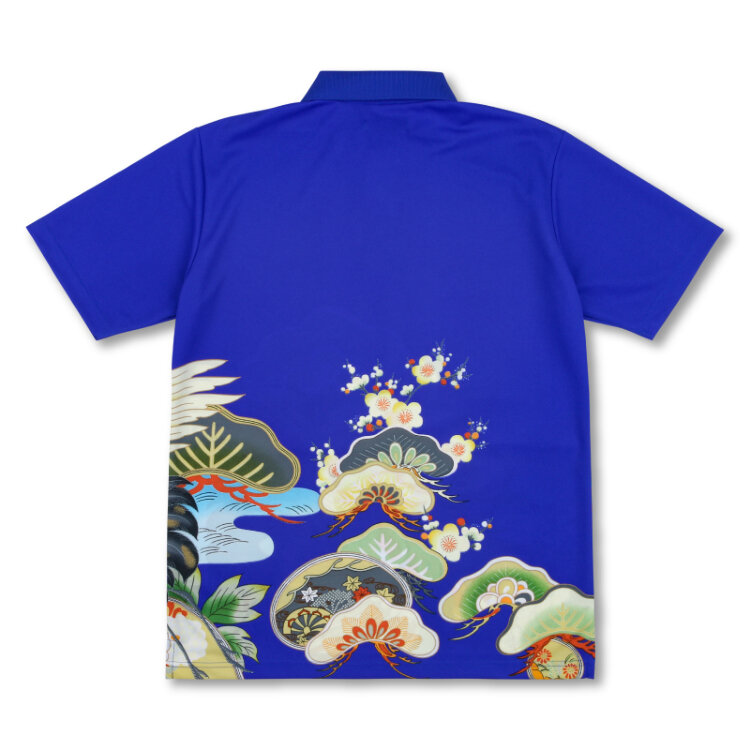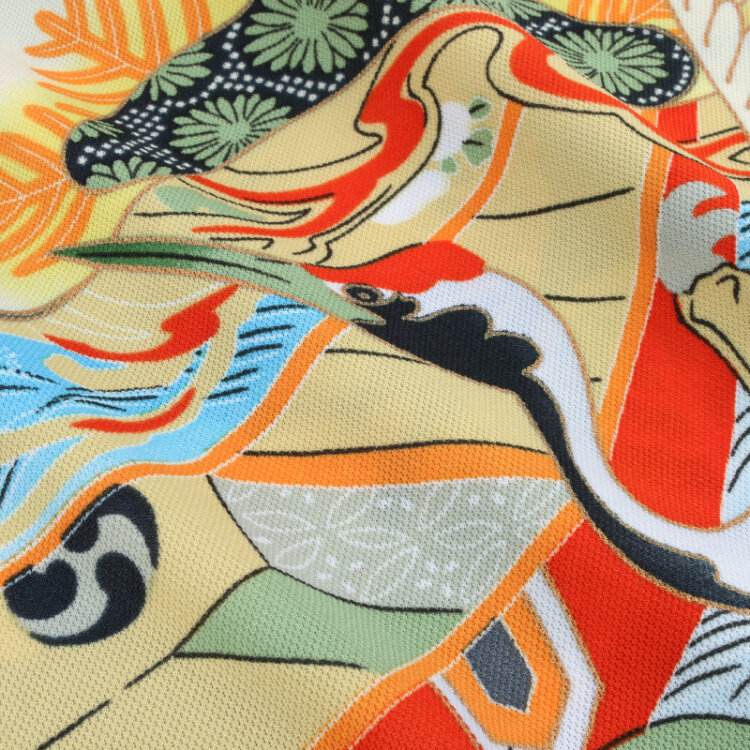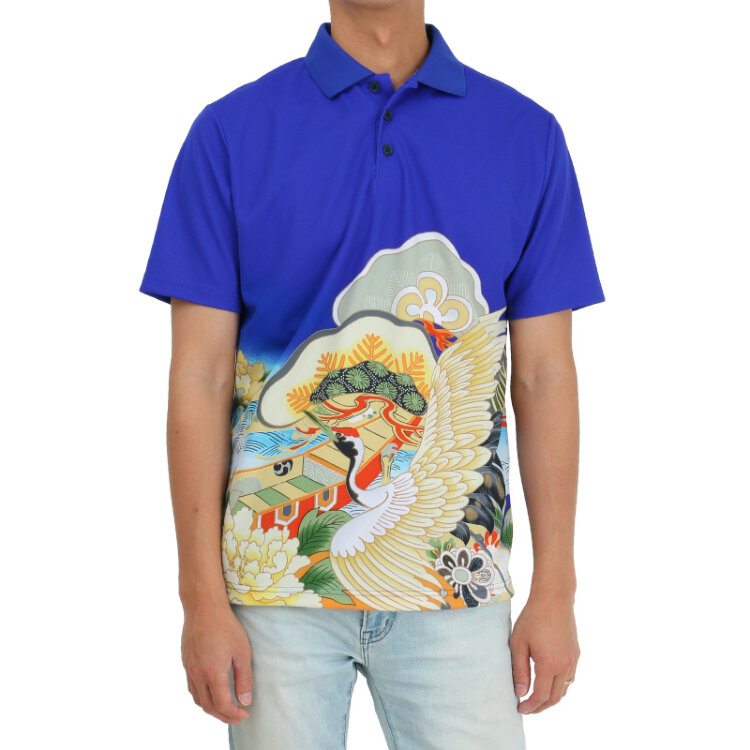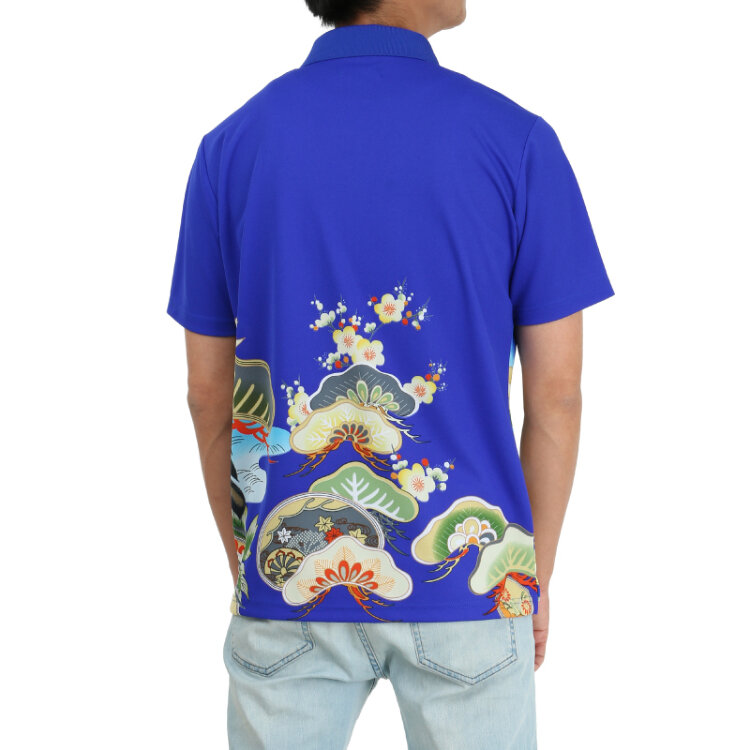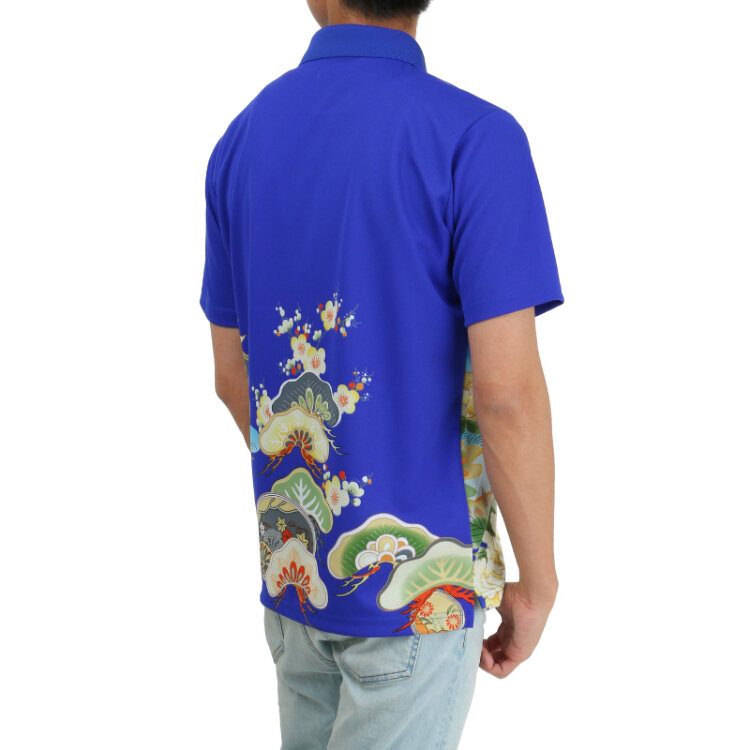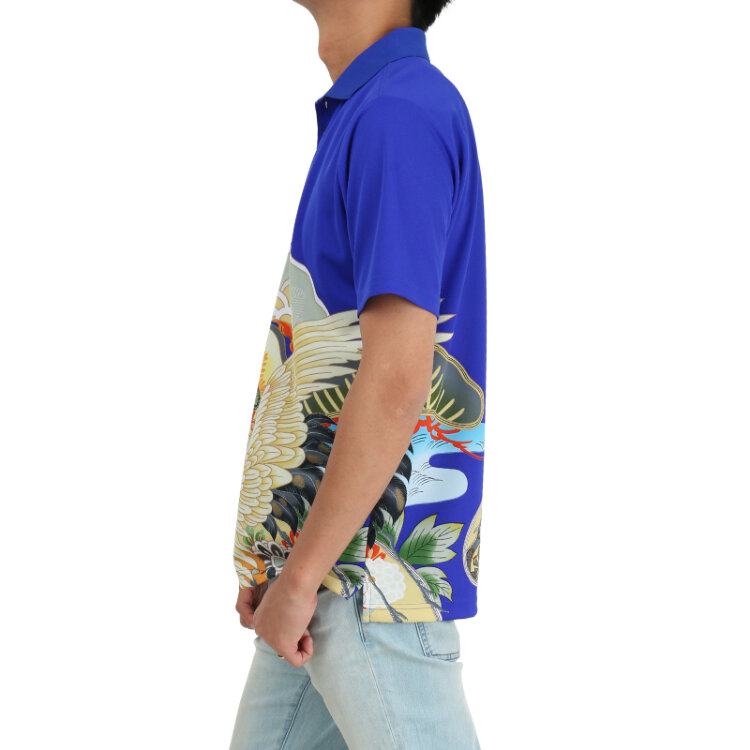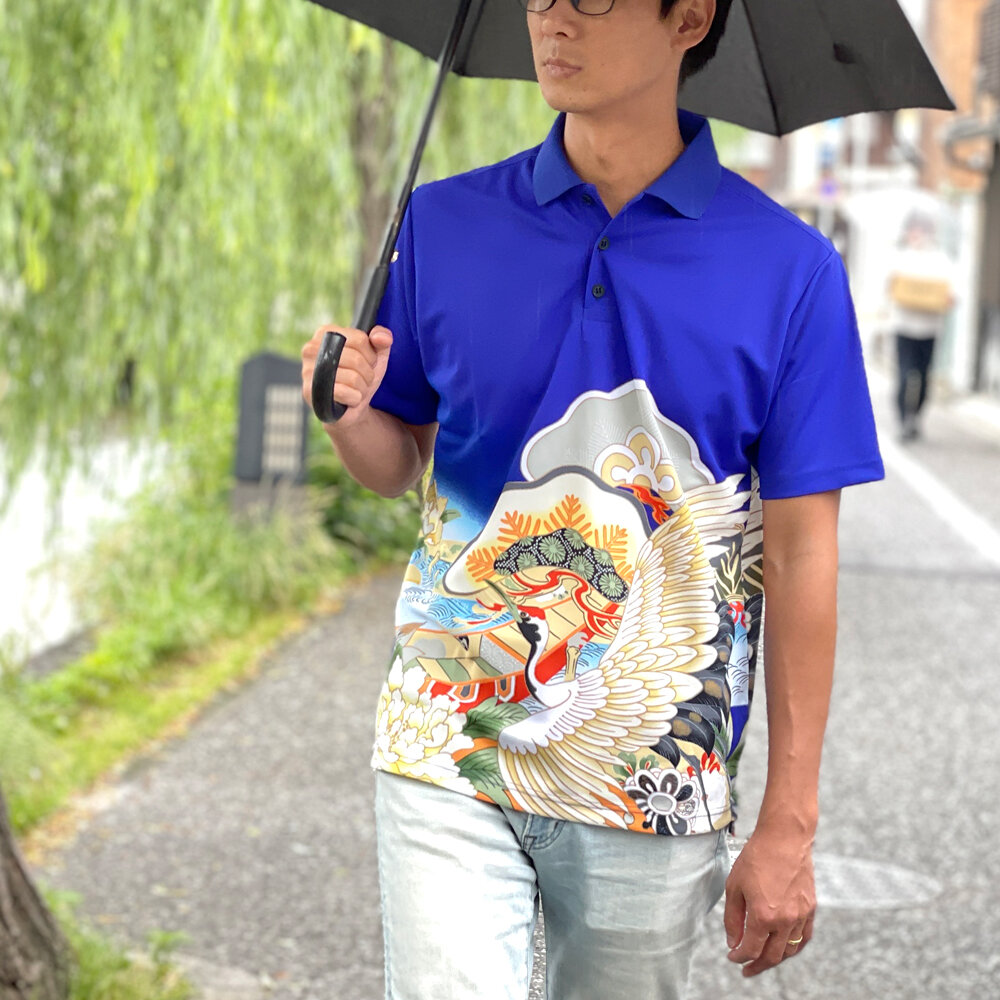ROOSTER IN THE SNOW Men's Polo Shirt
Color / Water Blue and Multi-color Care Instruction
Japanese name/ 雪中雄鶏図 ( sekichu yukeizu )
-About-
Jakuchū Ito, (March 2, 1716 to October 27, 1800) was raised in the Nishiki area of Kyoto during the “golden age of art” of the Edo era, before Japan opened its doors to the outside world.
Jakuchu was self-taught, and passionate about painting from childhood. A student of Buddhism at the Shokoku-ji zen monastery, he devoted himself to the art of painting, taking inspiration from classic Chinese paintings from the Yuan and Ming dynasties.
With nature as his teacher, he also began making thorough sketches of all natural phenomena, eventually establishing his own style of painting flowers, fish, and birds, especially fowl, which he used to keep at his home in order to observe them closely, and show their true nature in a style characteristic of Jakuchu.
At Pagong, in celebration of the 300th anniversary of the birth of Jakuchu Ito, we wish to breathe new freshness into this masterpiece with the use of a kimono dyeing technique called Kyo-Yuzen.
~A collaboration with the Hosomi Museum, Kyoto.
・100% Polyurethane
・Made in Japan
・Urban style
・Hand-wash gently
・Currency : US Dollar (USD)
Color / Water Blue and Multi-color Care Instruction
Japanese name/ 雪中雄鶏図 ( sekichu yukeizu )
-About-
Jakuchū Ito, (March 2, 1716 to October 27, 1800) was raised in the Nishiki area of Kyoto during the “golden age of art” of the Edo era, before Japan opened its doors to the outside world.
Jakuchu was self-taught, and passionate about painting from childhood. A student of Buddhism at the Shokoku-ji zen monastery, he devoted himself to the art of painting, taking inspiration from classic Chinese paintings from the Yuan and Ming dynasties.
With nature as his teacher, he also began making thorough sketches of all natural phenomena, eventually establishing his own style of painting flowers, fish, and birds, especially fowl, which he used to keep at his home in order to observe them closely, and show their true nature in a style characteristic of Jakuchu.
At Pagong, in celebration of the 300th anniversary of the birth of Jakuchu Ito, we wish to breathe new freshness into this masterpiece with the use of a kimono dyeing technique called Kyo-Yuzen.
~A collaboration with the Hosomi Museum, Kyoto.
・100% Polyurethane
・Made in Japan
・Urban style
・Hand-wash gently
・Currency : US Dollar (USD)
Color / Water Blue and Multi-color Care Instruction
Japanese name/ 雪中雄鶏図 ( sekichu yukeizu )
-About-
Jakuchū Ito, (March 2, 1716 to October 27, 1800) was raised in the Nishiki area of Kyoto during the “golden age of art” of the Edo era, before Japan opened its doors to the outside world.
Jakuchu was self-taught, and passionate about painting from childhood. A student of Buddhism at the Shokoku-ji zen monastery, he devoted himself to the art of painting, taking inspiration from classic Chinese paintings from the Yuan and Ming dynasties.
With nature as his teacher, he also began making thorough sketches of all natural phenomena, eventually establishing his own style of painting flowers, fish, and birds, especially fowl, which he used to keep at his home in order to observe them closely, and show their true nature in a style characteristic of Jakuchu.
At Pagong, in celebration of the 300th anniversary of the birth of Jakuchu Ito, we wish to breathe new freshness into this masterpiece with the use of a kimono dyeing technique called Kyo-Yuzen.
~A collaboration with the Hosomi Museum, Kyoto.
・100% Polyurethane
・Made in Japan
・Urban style
・Hand-wash gently
・Currency : US Dollar (USD)
If there is anything we can help you with, please feel free to let us know.
MAIL to : Pagong Kyoto
Contact Form >> www.pagongkyoto.com/contact


